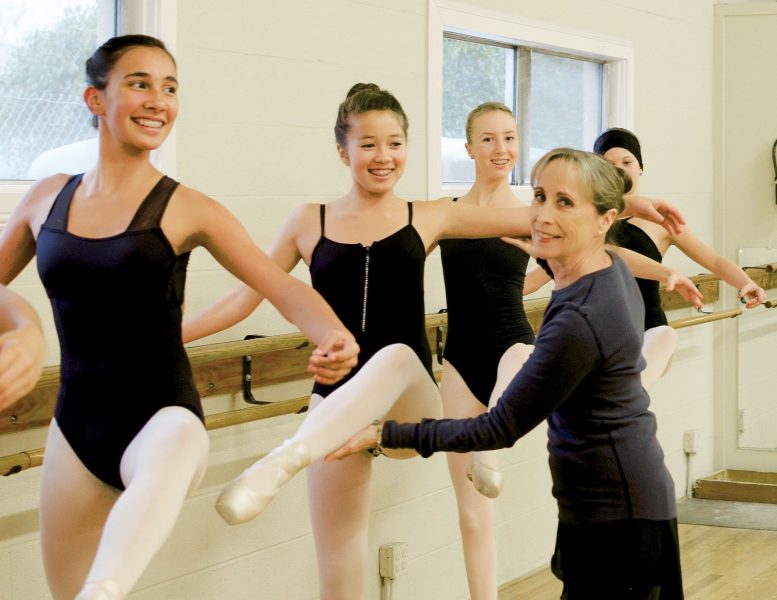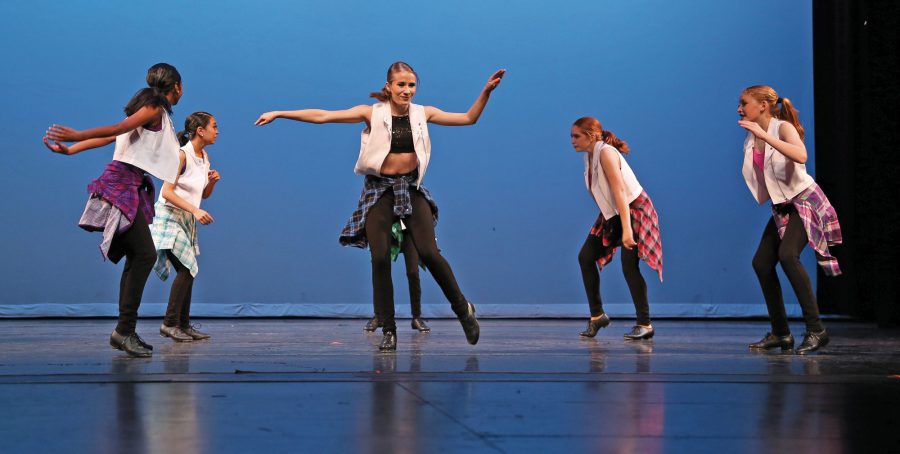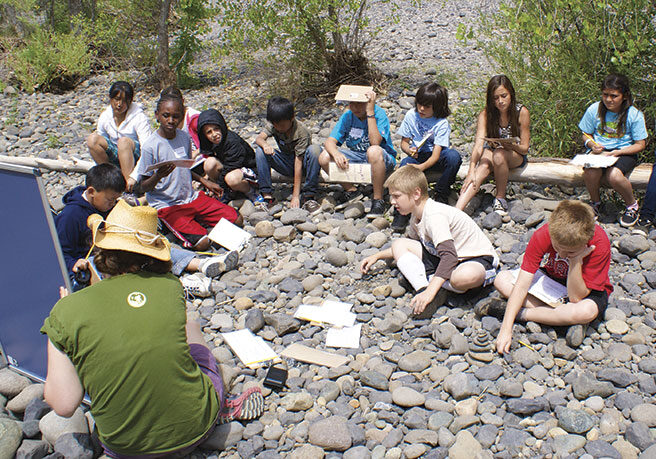Supporting your child’s commitment to dance can feel overwhelming at times. It’s easy to question our dance mom sanity while late-night chauffeuring to practice and dress rehearsals, or when the lesson and costume fees pile up. “Wait, did you just say you need a new pair of pointe shoes? Already?!”
During those moments, it might help to remember the many mental, social, and physical benefits you are exposing your children to through dance. I spoke with several Northern California dance professionals who provided insight into eight known ways that dance can benefit your child.
1 – Art Appreciation
The arts speak a universal language and appreciating the different forms of art can enhance your child’s life experience. Dancers tell stories and paint pictures through choreography and expression. Deborah Jorritsma, artistic director at Chico Creek Dance Centre and Chico Community Ballet, has a great passion for enriching the lives of both dancers and audience members with the art of dance. She says, “The appreciation of dance as an art form is a gift that children will carry into their adult lives.”
2 – Physical Health
Dancing is a wonderful way to get a whole-body workout as both an anaerobic and aerobic exercise. Your child will greatly benefit by making exercise a habit through dance. Added benefits come through improved flexibility, repetitive movements that create muscle memory, and good posture habits. These benefits can carry over to other physical pursuits. A basketball coach told dance instructor and Selah Dance Academy owner Mary Gross that her dance students made for graceful basketball players who were light on their feet.
3 – Growth Mindset
Michelle Ackley says, “Through the challenge of learning new dance steps, children learn that it’s okay to make mistakes and keep trying because eventually, the steps get easier. They can see that never giving up will lead to accomplishment. This growth mindset can transfer over to their schooling when it comes to challenging math problems or reading struggles.” Growth in all areas is important to Michelle, who is both a school counselor and Red Bluff, CA ballet teacher. In Southern California, she danced lead roles with the former Ballet Temecula and attended summer intensives with Ballet Pacifica and The Joffrey Ballet.
Overcoming stage fright is also an important part of growth. Mary Gross recalls speaking with a father whose daughter went on to be an attorney. The father credits dance with helping his daughter gain the confidence needed to litigate in a courtroom.
4 – Teamwork
You may not think of dance as a team sport, but dance classes are often made up of devoted team members working together toward an end-of-season performance. Children can be taught healthy competition and teamwork by encouraging them to congratulate and compliment their peers when merited. Each dancer brings different strengths to the dance floor. This knowledge frees children from jealousy and unhealthy competition, inspiring one another to personal bests. They will succeed or fail together, so working hard to build skills and perfect timing will increase their chances of success and reward the audience with a beautiful performance. Lifelong friendships are often forged in the camaraderie.
5 – Creative Outlet
Busy, rigid schedules and high expectations may begin to feel claustrophobic and stressful to children. Dance provides your child the opportunity to relieve stress through creative expression. Imaginations soar as dancers add extra flair to their moves or help with choreography. Creative outlets help children get in touch with their emotions and develop helpful coping skills for life’s problems. Dancing is an excellent way to release endorphins, the happy hormones.
6 – Brain Health
Parents may have heard about the benefits of music and the brain. When you add movement to the music, you now have twice the brain boost! The brain goes through complex mental processes to develop the coordination required by dance. In a 2008 article in Scientific American magazine, a Columbia University neuroscientist posited that synchronizing music and movement—dance, essentially—constitutes a pleasure double play. Music stimulates the brain’s reward centers, while dance activates its sensory and motor circuits. The full article is available for those who would like to learn more at neuro.hms.harvard.edu/harvard-mahoney-neuroscience-institute/brain-newsletter/and-brain-series/dancing-and-brain.
7 – Respect
Respect for oneself and others is crucial for children. Michelle Ackley explains, “Dance lessons demand a high level of self-control. Students learn to respect their instructors so that everyone stays safe within appropriate spacing, and, in order to improve, take in constructive criticism and instruction. This creates respect for self and others in valuing their growth as a dancer. Out of this respectful environment flows self-regulation which translates into success in school and at home. There have been many studies that show that kinesthetic learning leads to higher academic achievement due to increased engagement.”
8 – Future Employment
The reality is that most children will not go on to a professional level of dance, but as adults, they may choose to work as a dance instructor. Remember, the focus should eventually be their goals, not the goals of the parents. One of the biggest gifts you can give your child is the development of a variety of employability skills and dance may factor into them.
You may have noticed that some of the eight benefits are interconnected, reminding us that the physical, social and mental well-being of children is also interconnected. Dance can influence the whole-body wellness of children and may even give parents a chance to sit back, take a breath, and enjoy a beautiful, artistic display at those end-of-season performances.

Redding Dance Centre’s Artistic Director Deborah Larsen working with students.
Posted in: Art & Music, Community
Comment Policy: All viewpoints are welcome, but comments should remain relevant. Personal attacks, profanity, and aggressive behavior are not allowed. No spam, advertising, or promoting of products/services. Please, only use your real name and limit the amount of links submitted in your comment.
Comments
Trackbacks
-
[…] self-confidence and social skills. A good dance program will also help your child develop their creativity and artistic expression, providing them with a lifelong passion for the arts. With so many benefits to be gained, […]







Zachary Tomlinson says
Wow, it’s amazing to learn that a ballet dance lesson can help a child learn about the importance of working as a team along with respecting other people. My brother is looking for a hobby that’s suitable for his daughter. I’ll be sure to recommend this to him so he’d consider sending his kid to learn ballet!
Kristina Moreno says
That’s great to hear, Zachary! We’re happy you found the article insightful.